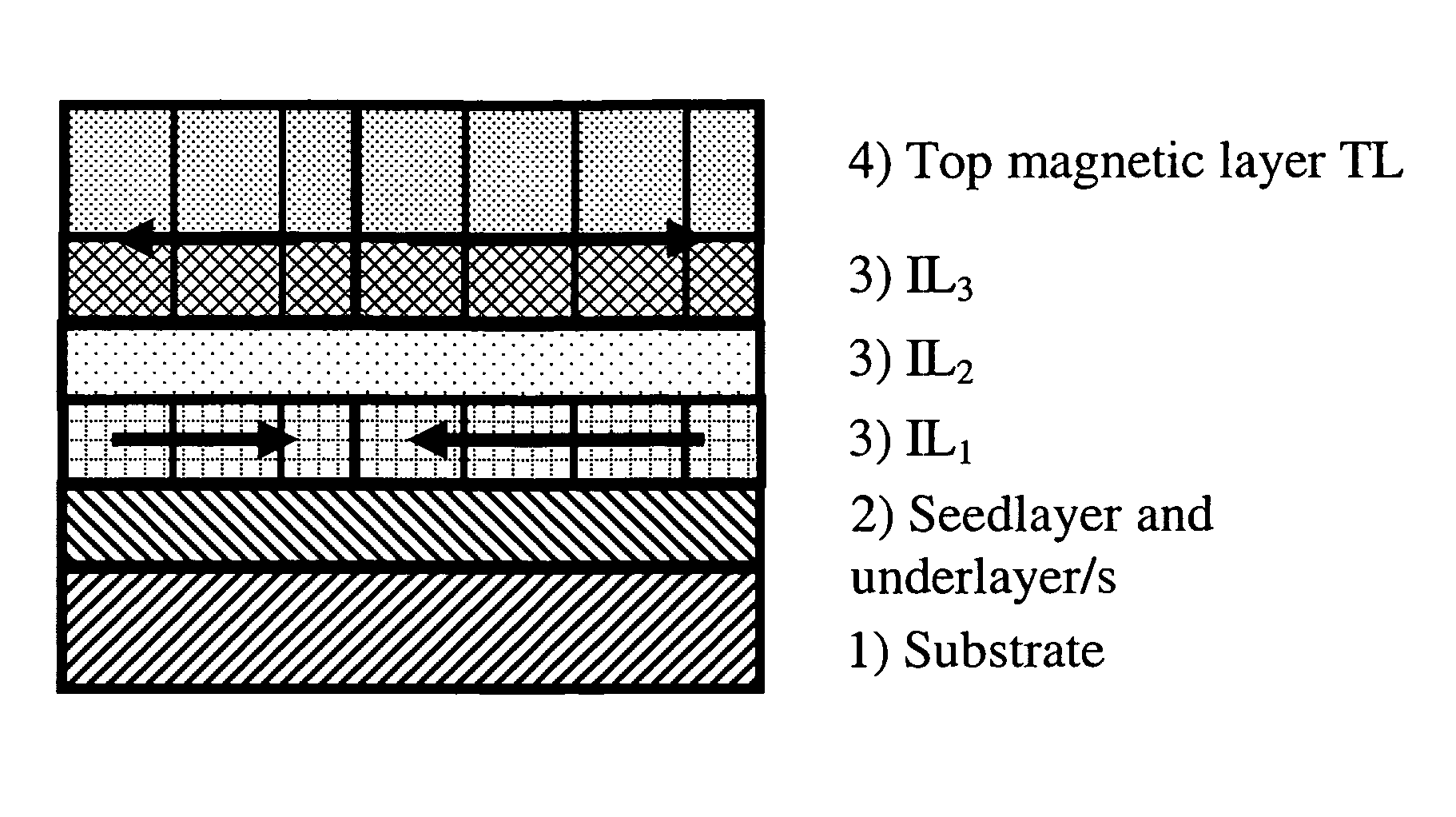Interlayer design for magnetic media
- Summary
- Abstract
- Description
- Claims
- Application Information
AI Technical Summary
Benefits of technology
Problems solved by technology
Method used
Image
Examples
examples
[0054] Longitudinal media, AFC media and QAFC media were prepared with following media structures: [0055] Longitudinal media: Cr based underlayers / IL / TL [0056] AFC media: Cr based underlayers / BL / Ru / IL / TL [0057] New media design, QAFC: Cr based underlayers / IL1 / IL2(Ru) / IL3 / TL
The IL1 in the new media design is much thinner than BL in AFC and similar in composition. IL3 in QAFC is several times thicker than IL in AFC and similar in composition. TL has the same composition in all three media structures. IL3 in QAFC and IL in longitudinal media have similar thickness and composition. However, the relative contribution of IL1 to total Mrt of QAFC is significantly larger than the relative contribution of IL to total Mrt of longitudinal media. In longitudinal media IL grows on top of a Cr-rich layer with bcc crystal structure. This causes formation of a thin transition layer at the interface between bcc and hcp crystal structures that does not contribute to media Mrt. On the other hand, in...
PUM
 Login to View More
Login to View More Abstract
Description
Claims
Application Information
 Login to View More
Login to View More - R&D Engineer
- R&D Manager
- IP Professional
- Industry Leading Data Capabilities
- Powerful AI technology
- Patent DNA Extraction
Browse by: Latest US Patents, China's latest patents, Technical Efficacy Thesaurus, Application Domain, Technology Topic, Popular Technical Reports.
© 2024 PatSnap. All rights reserved.Legal|Privacy policy|Modern Slavery Act Transparency Statement|Sitemap|About US| Contact US: help@patsnap.com










